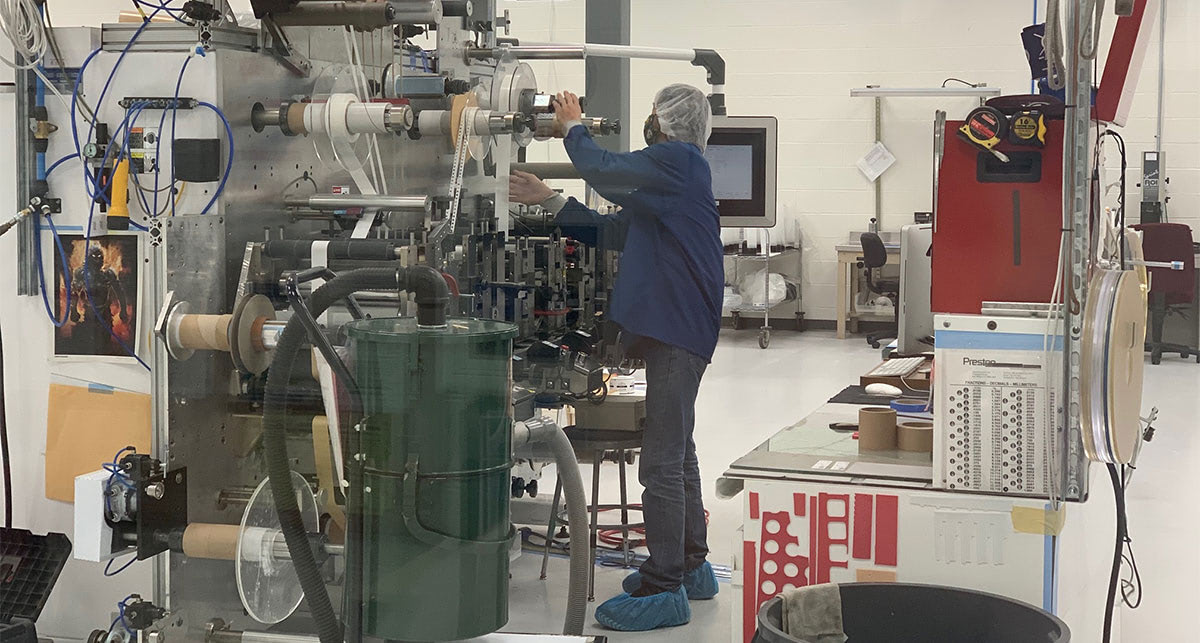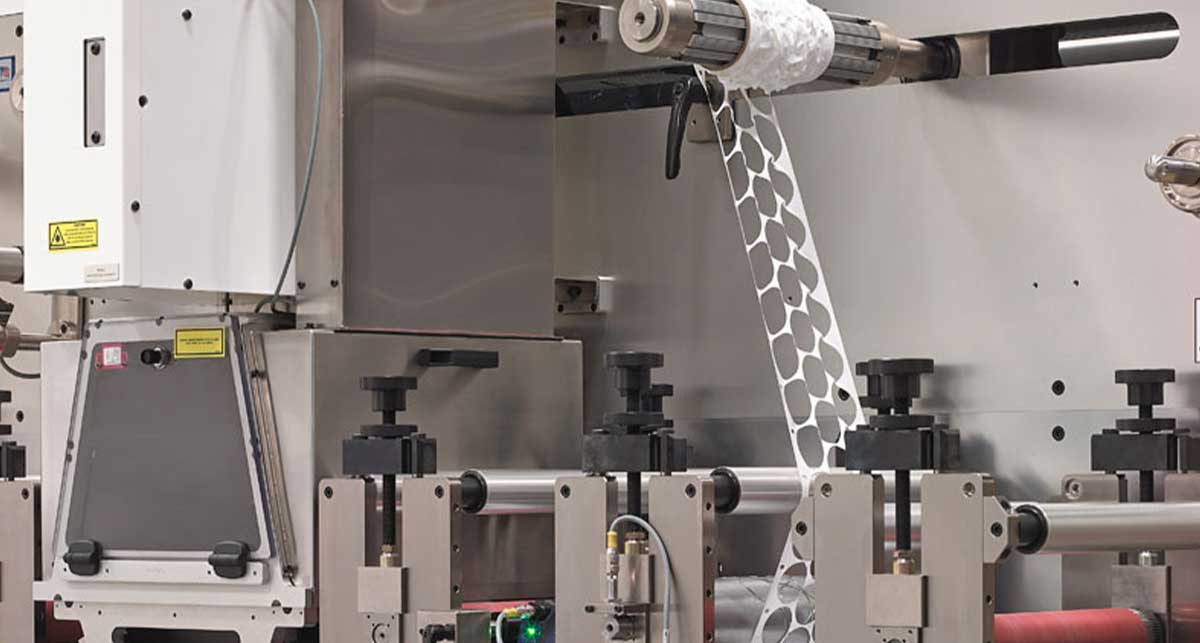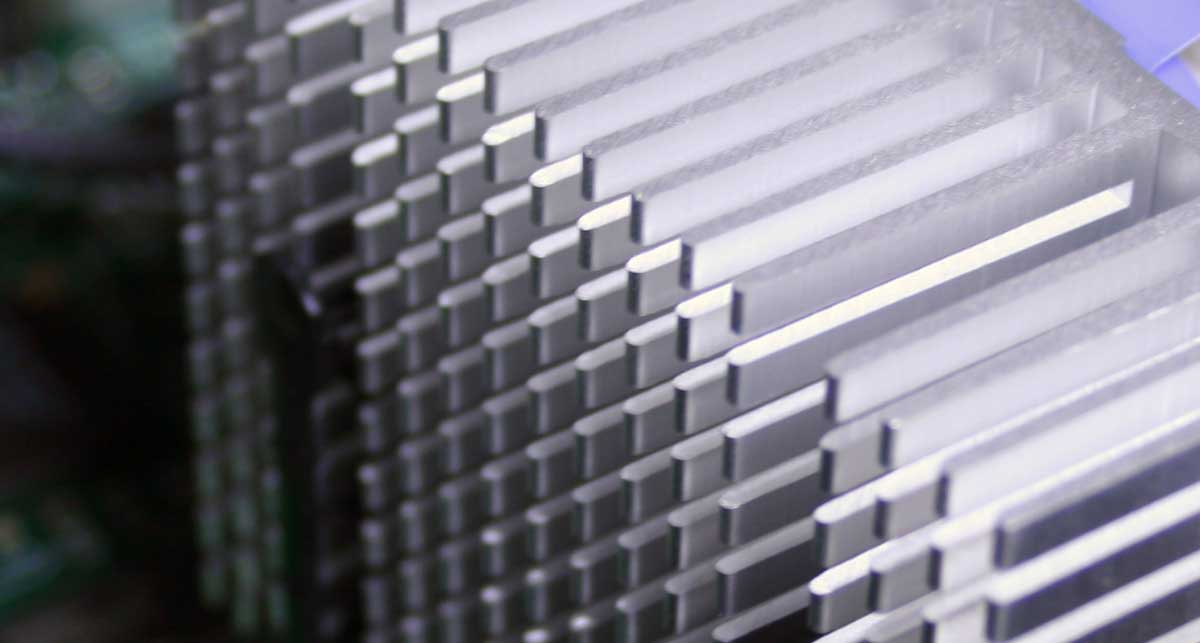If you were able to touch radio waves and signals, you wouldn't be able to move ten feet without bumping into one. In fact, the device from which you're reading this article has a wireless signal (unless you’ve printed it out).
But what keeps those signals from crossing? How can you answer your cell phone without the signal disturbing the WiFi connection on your laptop? Luckily, EMI (electromagnetic interference) can be solved with proper protections.
As a flexible material converter, customers often approach us with designs that shield against electromagnetic interference. We combine their innovative solutions with our flexible material knowledge & machines to build product components that prevent EMI disturbances.
Keep reading to learn all about EMI shielding, gaskets, and the materials that keep your signals in check.
What is Electromagnetic Interference (EMI)?
Have you ever been listening to the radio only for it to go crackly for a moment? During that few seconds of static, be it in your home, across the street, or across town, someone’s cell phone could’ve rung and interrupted your radio signal.
Electromagnetic interference (EMI) occurs whenever one source disrupts another's signal. Engineers also refer to EMI as Radio Frequency Interference (RFI).
In the previous instance, your radio was looking for one signal but latched onto another. While radio interference illustrates an annoying result of EMI, this type of interference can cause more than just missing a few bars on your favorite song.
Specifically, it impacts electrical circuits through induction, electrostatic coupling, or conduction. EMI can prevent devices from doing their jobs and even cause them to fail completely.
TYPES OF EMI
There are two types of EMI: narrow-band and broadband EMI.
1. Narrow-band EMI typically happens to radios, TV stations, and mobile phones because it occurs over a discrete frequency. Signals cross and devices malfunction. Usually, a consumer can tune out the disruption that will not cause damage to equipment.2. Broadband EMI occurs over a broader spectrum since it occupies a large part of the electromagnetic spectrum. Broadband EMI is the type of EMI that can cause the most damage to your devices, and you’ll notice this type of interference most when using a device with a digital data link.
Where Does EMI Come From?
Electromagnetic interference can come from both manufactured and natural sources. Examples of EMI sources include:
a. Starting your carWhen you start your car, your ignition can cause EMI. The same kind of interference can come from the igniter in a jet engine or defects in power lines.
b. Radio frequenciesInterference over radio frequencies is the most common type in the electromagnetic spectrum. Energy radiated by circuits, power lines, lightning, lamps, and even motors and engines causes this interference.
In each of these cases, the devices you're attempting to use might receive several different transmitted frequencies, mix them up, and then cast them out over a broad spectrum.
You’ve probably noticed EMI at home when your devices don’t do what you want. However, the same problems in a commercial environment can cause ruined hardware, lost data, and wasted productivity.
c. Large equipmentLarge equipment that puts out a big signal, or has a considerable volume, can cause interference. Big, moving equipment like elevators, heavy machinery, HVAC equipment, and even vehicle traffic will cause interference. The same goes for basic communications devices as well as general radio signals.
d. Older devices with worn-out EMI shieldingOlder devices with worn-out shielding or no EMI shielding materials might experience or lead to EMI problems. For example, machinery and electrical equipment can generate stray magnetic or electric fields that cause trouble for precision research applications.
e. Literally the sunThe sun, specifically solar flares and lightning, can cause electromagnetic interference naturally.
In short, you cannot avoid EMI. EMI is everywhere, and the fact that our devices don’t pick up MORE interference is a modern miracle of technology. Yet, EMI shielding enables our devices to sift through the noise.
What is EMI Shielding and How Does It Work?
EMI shielding uses materials that prevent electromagnetic interference. It often consists of a metallic screen that surrounds sensitive electronics or device insides and absorbs the interference transmitted through the air.
With all of the problems EMI causes, you can see why EMI shielding matters. Our devices need protection from picking up the wrong signals & security in picking up the right ones. EMI shielding ultimately exists to protect the electronics of your device.
First, signals reach your device, causing electronic currents. Then, a ground connection, a.k.a., a virtual ground plane, absorbs this current. Lastly, the EMI shield absorbs transmitted signals before they reach any sensitive circuits on your device, keeping your protected signal clean.
Your smartphone is an excellent example of why you need an EMI shield. Modern phones consist of many sensitive, intricate electronics working simultaneously to operate your display. An EMI shield prevents random signals and waves from causing trouble within those sensitive electronics.
EXAMPLES OF EMI SHIELDING
You can find electromagnetic interference shielding anywhere you find sensitive electronic equipment requiring isolation from outside electromagnetic fields.
i. Medical: EMI shielding is used on equipment like AM/FM emergency service transmission and other communication devices. It also covers patient monitoring equipment and pacemakers.
ii. Data and tech: EMI shielding prevents anyone from accessing data you store on an RFID chip or embed in a different device.
iii. Security: Engineers will also use EMI shielding material with air-gapped systems to increase military, government, and financial security.
Whenever you have any device or appliance with sensitive electronics, you need EMI shielding to protect it from unseen electromagnetic fields. The naked eye can’t see all the potential interference in the air, but EMI shielding protects you from it regardless.
COMMON EMI MATERIALS
Certain materials lend themselves to stopping the signals that can damage your devices:
- Pre-tin plated steel
- Copper
- Copper alloy 770 / Nickel silver
- Aluminum
- EMI shielding film and foil
- EMI shielding foam
- EMI shielding silicone
Choosing the right material for EMI protection isn’t easy, so if you have any questions about which suits your part design, don’t hesitate to contact us.
EMI Shielding Gaskets
A gasket is a seal that fills the space between two surfaces. EMI shielding gaskets work similarly, except they exist to protect electronics from interference.
EMI shielding gaskets, made from particle-filled silicones, look like sieves or ruggedized touchscreens. They work well in the heat and cold, making them ideal solutions for EMI problems.
EMI shielding of the past consisted of metal sheets that fabricators formed into specific shapes to fit into housing or enclosures. Usually, these materials consisted of thin aluminum, copper, and steel metal sheets. If weathering or time deforms the sheets, the circuits they're supposed to protect will leak.
Modern EMI gaskets are relatively easy to fabricate, and the materials don’t cost much.
How Do I Build an Effective EMI Shield?
Not all EMI shields are made alike, but they all do the same thing: prevent unwanted interruptions in transmissions. Electromagnetic interference can destroy a machine, but shields prevent the damage from happening.
Modern technology has given us a variety of EMI shielding options made from carefully chosen materials to prevent unwanted interference. Yet, each device has its own unique shape, materials, and design.
If you’re looking to build the most effective shielding solution for your application, then you’ll want to experiment with different materials and design adjustments until you discover the best fit.
Testing your design will allow you to confirm that it functions correctly and prevents EMI in its intended application. At Strouse, we can cut, laminate, and build custom samples with rapid efficiency. If you’d like to try out your design, reach out to us today.
Finally, you can check out this page for more information on our EMI & RFI Shielding Solutions.
Originally published: May 12, 2020







